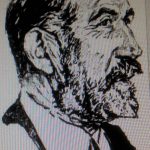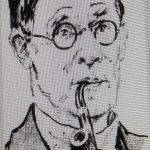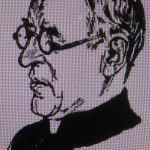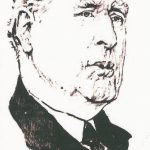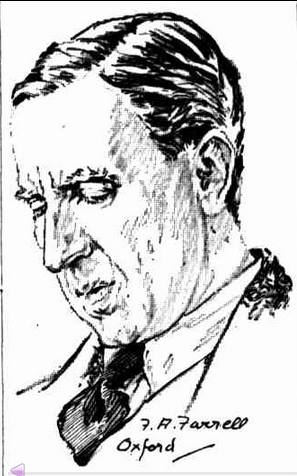
In The Advocate of 9 August 1934 a head and shoulder portrait of an academic (right) was published with the accompanying text: “Professor John Tolkien has been Rawlinson and Bosworth Professor of Anglo-Saxon in Oxford University since 1925. He served with the Lancashire Fusiliers from 1915-18. Born of a South African family in 1892, he was educated at the King Edward VI. School, Birmingham, and Exeter College, Oxford. He was Professor of English Language in Leeds University in 1924-5.” This sketch does not appear to have been published for over seventy years until it resurfaced earlier this week. The use of John rather than Ronald suggests that Tolkien was probably not actually consulted about the text.
‘New’ drawings of Tolkien are not unearthed every day, especially from the period before the publication of The Hobbit in 1937, so this image of the author dating from 1934 is particularly interesting. What was Tolkien doing in 1934? He had probably fairly recently completed the first version of The Hobbit. He was a busy academic, lecturing and teaching on a daily basis, and was also working on several academic publishing projects. The poems ‘The Adventures of Tom Bombadil’ and ‘Looney’ had also been published for the first time earlier that year. It is interesting that although he had not published any fiction at this point, he was considered of sufficient international significance as a Catholic to be featured in an antipodean religious publication.
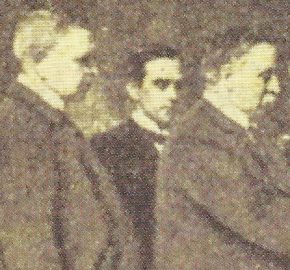
In 1934 The Advocate was a six-penny weekly newspaper specialising in supplying newsworthy items to Catholics in Melbourne, Australia. The Advocate still appears today, but is now a monthly magazine and a web page. The feature itself appeared in the regular column, “A Letter from London”, but the only clue as to authorship was that it was supplied by “The Advocate’s Special Correspondent.” In 1930 and earlier the column was supplied by a named author, Denis Gwynn.
The portrait is signed by F.A. Farrell, and accompanied by the single word Oxford. It is possible that the likeness may have been obtained from a photograph. However, Charles Noad, a leading bibliographer and scholar of Tolkien, believes that the drawing is more likely to have been taken from life. He contends that it would almost certainly be neater if it had been copied from a photograph. Hopefully, further research may answer this question definitively.
The enigmatic initials of F.A. Farrell reveal the interesting fact that the artist was Frederick A. Farrell – who was Glasgow’s official war artist in the First World War. This was the only known instance of a city sponsoring a war artist! As his career and considerable talent have suffered from a great deal of neglect I’m taking this opportunity to flesh out his biography a little here in the hope that someone will be able to discover more about him.
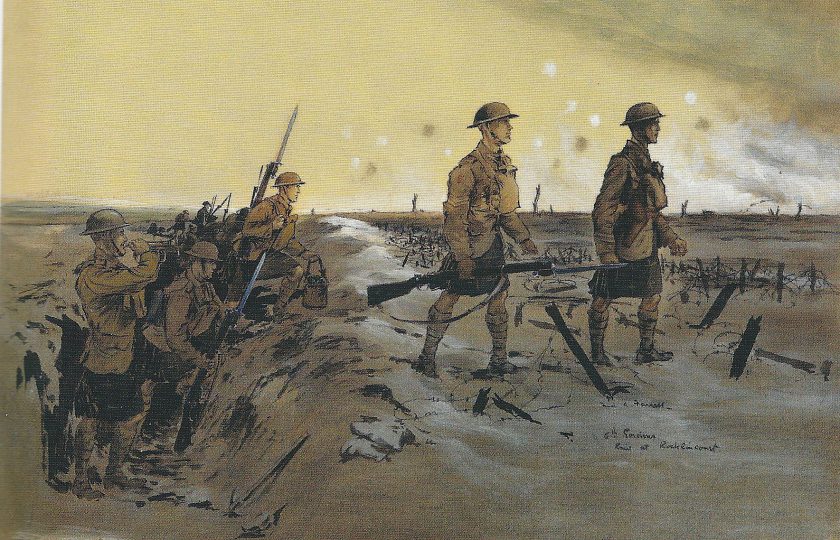
Frederick Arthur Farrell was born on 29th November 1882, the third son of John Farrell, curator of Glasgow’s Trades House, and Margaret Farrell – so he was precisely a decade older than Tolkien. He originally trained as a civil engineer, but at the time of his attesting in 11 December 1915 he gave his occupation as “Artist (Etcher)”. He is believed to have been self-taught as an artist. He was called up on 13 June 1916, but was discharged on 26 November because a gastric ulcer he’d suffered from since 1906 became inflamed. Then, the following month he went to the western front for 3 weeks as an artist with the 15th, 16th and 17th Highland Light Infantry in Flanders. On the home front he drew Glasgow women at work in munitions factories, shipyards and engineering works. He returned to France in November 1917 for two months attached to the 51st (Highland) Division. It was this latter attachment which resulted in his 1920 book: The 51st (Highland) Division War Sketches.
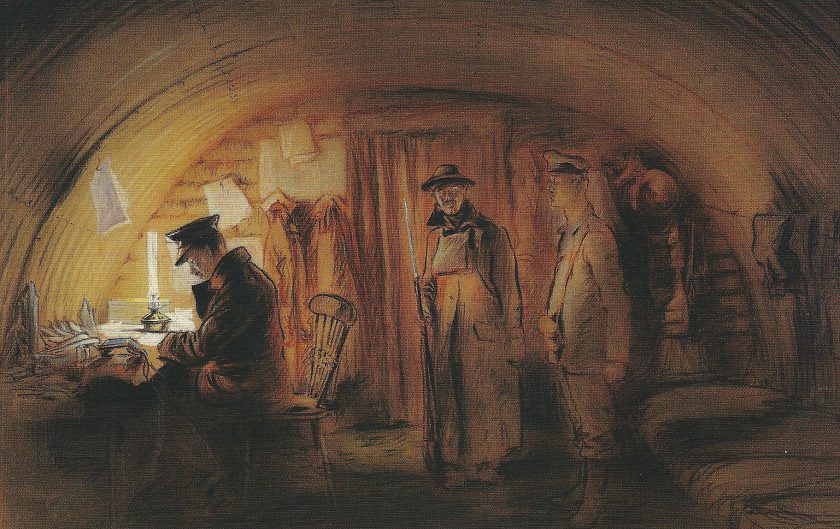
In the immediate aftermath of the war Glasgow Corporation selected 50 out of 99 of Farnell’s paintings for a substantial exhibition in the Banqueting Hall of their City Chambers. Since that time Farrell’s work was not seen in public until Glasgow Museums organised another exhibition to commemorate the centenary of the outbreak of World War One in 2014. This exhibition closed last November. However, an accompanying book: Fred A. Farrell: Glasgow’s War Artist was published last year, and is still in print.
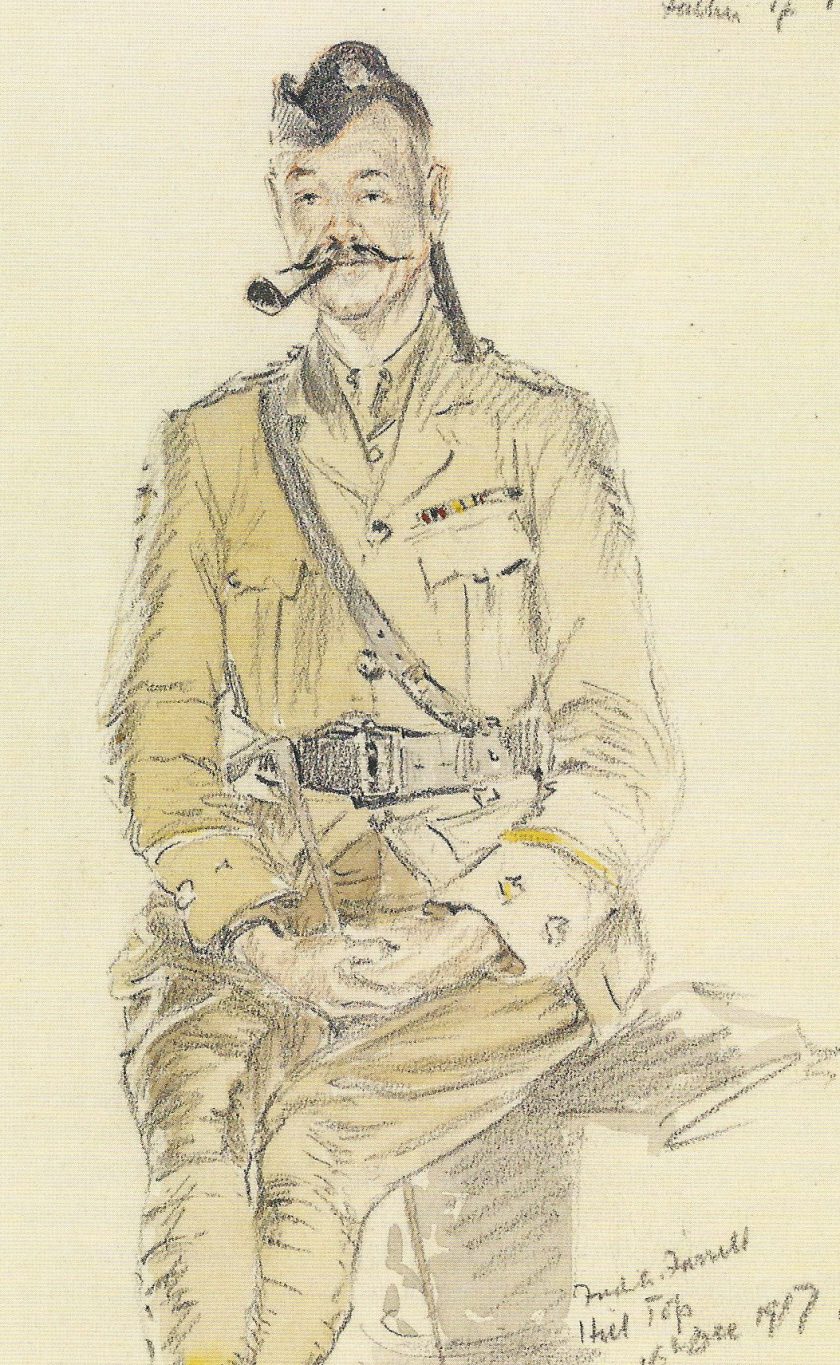
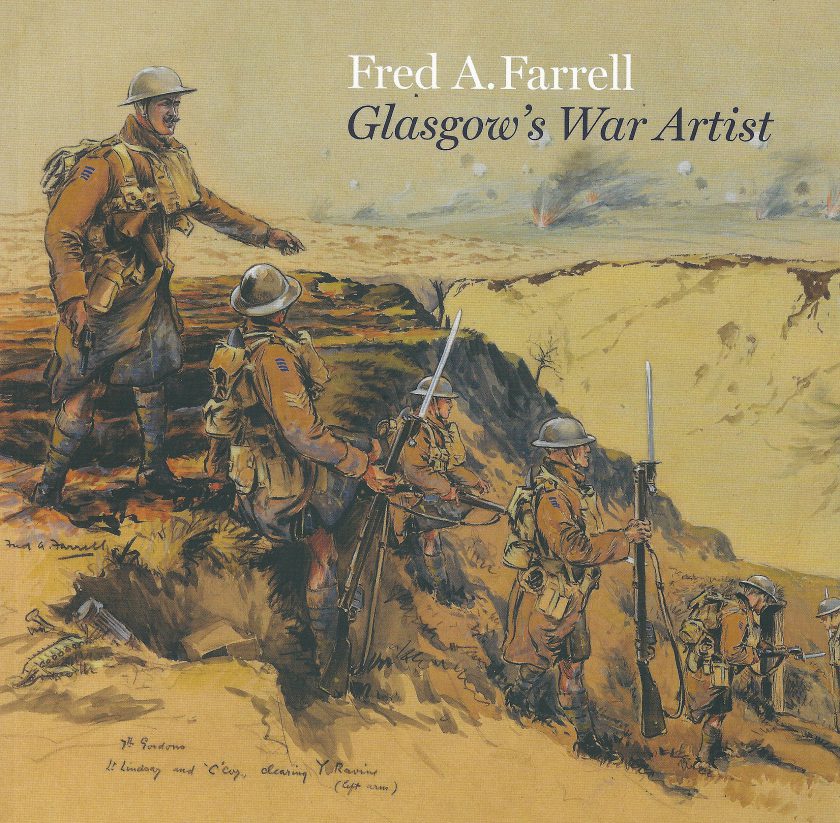
Unfortunately, the recent book does not include a postscript to briefly describe Farrell’s post-war career. What follows are my attempts to pull something together after spending two days searching the internet, so there must be gaps that could be filled in by more dedicated research. After the war Farrell is known to have continued to produce etchings of London landmarks, continental scenes, and Scottish topography. His portraits are less widespread, but some of his war work included studies of men in combat situations, as well as commanding officers in repose.
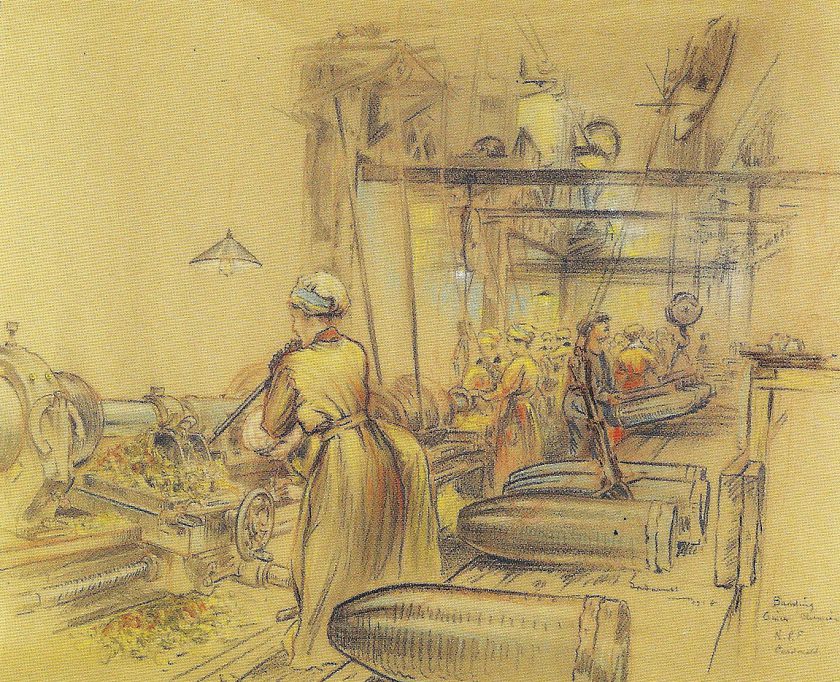
In the early 1930s Farrell’s “line portraits of eminent Catholics in the Old World” were appearing fairly regularly in the Advocate magazine, and his 1935 Advocate obituary stated that his work appeared frequently in London’s Universe, which was another Catholic periodical. The inference is that Farrell too was a Catholic, which seems likely, but so far I have been unable to prove this. It is possible that his portraits appeared first in an English journal, such as the Universe, before publication in Australia.
At least another four portraits appeared in the Advocate in the months preceding Tolkien’s: John Francis O’Malley (Aug 1933), Fr. Francis Woodlock (Sep 1933), W.R. Titterton (Feb 1934) and Dr J.M. Villasante (Jun 1934). [All of these portraits are given for comparison purposes at the end of this piece]. Tolkien is the only one of these figures in which the head is looking down so strongly. For this reason Tolkien’s portrait fails to exude some of the self-confidence and directness which the others exhibit. If anything Tolkien’s slightly pursed mouth and frown give the sitter a pensive look. Perhaps Tolkien was extremely busy when the portrait was executed, and was simply concentrating on a book, or working on a difficult passage of translation? Whatever the reason it is evident that the tone of this portrait is quite different from the others. Tolkien also differs in that no date is attached to Farrell’s signature, whilst all of the others are dated. This habit of dating betrays that the sketch of Villasante was drawn two years before the illustration appeared in print. Therefore, it is possible that Tolkien’s portrait may also have been drawn as much as two years earlier than August 1934.
Apparently, an obituary was published in the Glasgow Herald of 23rd April 1935, but at the time of writing I have not managed to track down a copy. However, the Advocate reveals that Farrell died after a short illness while he was touring Scotland. Meanwhile the obituary in The Times on 25th April 1935 is a little more forthcoming on the cause of death, but more reticent on his career. The full notice reads: “Mr. Frederick Farrell, who died at Mares(?), Scotland on Monday from pneumonia, was an etcher of topographical subjects, a water-colourist, and a member of the Fine Art Trade Guild. He did many illustrations for newspapers and his works were published by Vicars Brothers” – so his war work was completely overlooked! From this obituary I’m able to confirm that Farrell died on 22nd April 1935.
The picture and text from The Advocate have been kindly supplied by Brazilian solicitor and Tolkien enthusiast, collector, and administrator of tolkienbrasil.com, Eduardo Ferreira, which were sent to him by a friend, who knew of his interest in Tolkien. I hope this post stimulates interest in Farrell and encourages someone to unearth more facts about this talented and undeservedly neglected artist.
The whole 1934 page of The Advocate of which Tolkien was a part may be found here: http://trove.nla.gov.au/ndp/del/article/171898324?searchTerm=tolkien&searchLimits
